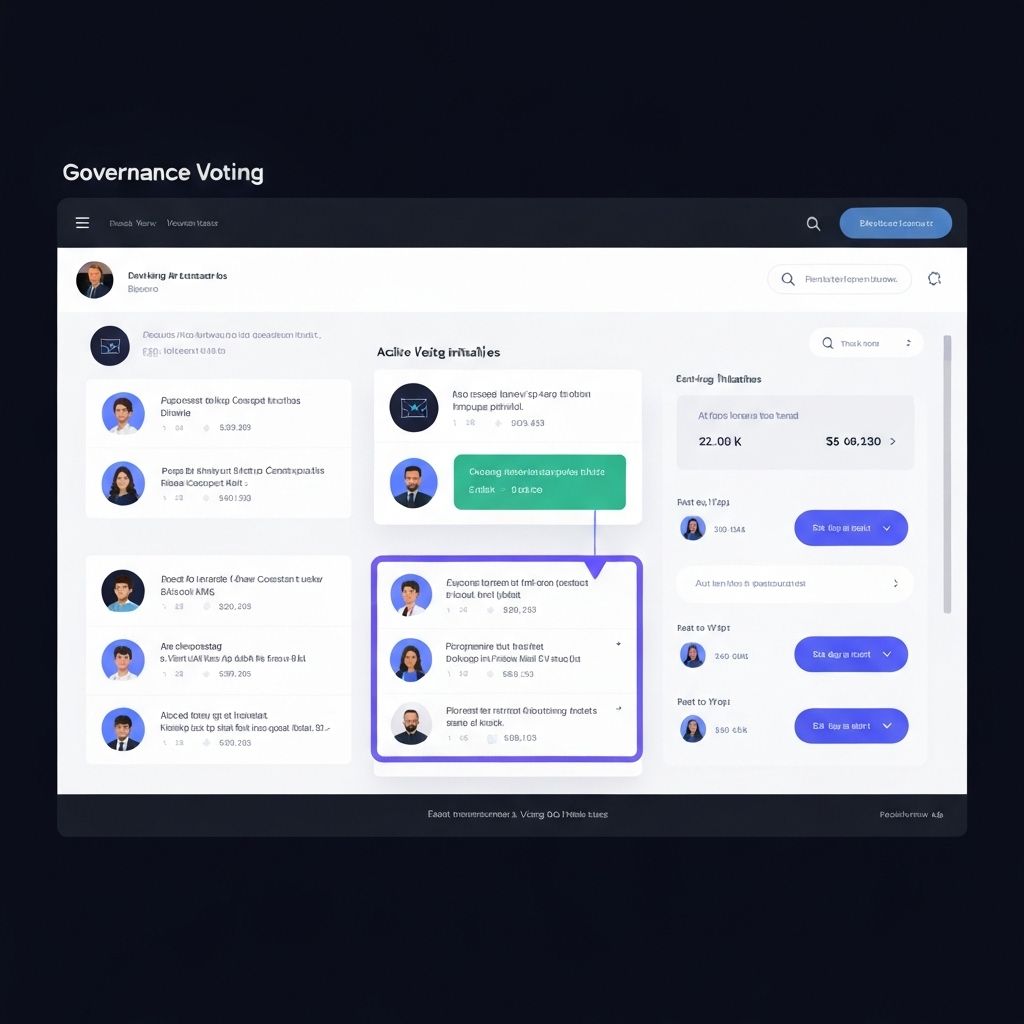DAO Governance: Mechanisms and Implementation
Decentralized Autonomous Organizations (DAOs) represent a fundamental shift in how organizations can be structured and governed. This comprehensive guide explores the mechanisms, implementation strategies, and best practices for building effective DAO governance systems.
Understanding DAO Governance
Core Principles
DAOs operate on several key principles:
- Decentralization - No single point of control
- Transparency - All decisions and transactions are public
- Autonomy - Governed by smart contracts and community consensus
- Token-based Voting - Governance rights tied to token ownership
- Proposal-driven - Changes implemented through community proposals
Voting Mechanisms
1. Simple Token-Weighted Voting
The most common form where voting power is proportional to token holdings.
2. Quadratic Voting
Reduces the influence of large token holders by making additional votes increasingly expensive.
3. Conviction Voting
Allows continuous signaling of preferences with conviction building over time.
Treasury Management
Multi-Signature Treasury
Secure fund management through multi-signature wallets requiring multiple approvals.
Streaming Payments
Automated payment streams for ongoing contributors and service providers.
Advanced Features
- Vote delegation systems
- Proposal categories with different requirements
- Rage quit mechanisms for minority protection
Best Practices
- Clear governance structure with defined roles and processes
- Appropriate voting mechanisms for your community
- Robust treasury management with proper safeguards
- Security-first approach with time delays and emergency controls
- Active community engagement and participation incentives
Conclusion
DAO governance is complex but powerful for decentralized decision-making. Success depends on finding the right balance between decentralization and efficiency, ensuring systems are both democratic and practical.
